Last Updated: December 10, 2019 Anil Rana
The lush South Indian state of Kerala is primarily known for its pristine natural beauty and spiritualistic ambience, hiding in its store a plethora of beautiful and majestic temples giving it the nickname of ‘God’s own Country’. Not many know that this gorgeous state has been a major contributor to India’s rich culture and history. Reigned by a number of local Dravidian dynasties and foreign colonial powers during different periods in the bygone times, no wonder, this cultural state today, is a treasure trove of architectural monuments, heritage sites and some magnificent historical forts & palaces. These age-old structures speak of many fascinating tales of Kerala’s charming past, drawing countless history fanatics, archaeology buffs and art & architecture enthusiasts from all across the globe. If you are also amongst those who tend to be smitten by the beauty and history of the ancient buildings and monuments, a trip to Kerala is definitely a must for you. And if you want to have a brief insight into which historical places to include in your itineraries, here is a consolidated list of 15 top Kerala’s historical sites, only for you.
Jewish Synagogue
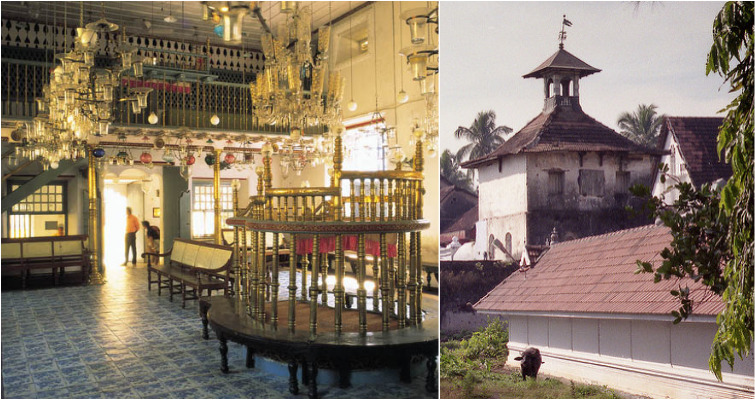
Also commonly called as the ‘Paradesi Synagogue’ or ‘Mattancherry Synagogue’, the ‘Jewish Synagogue’ located in the small neighbourhood of Mattencherry in Old Cochin, dates back to 1568 and was built by the community of Paradesi Jews who once inhabited the Jew Town area in Kerala during the olden times. The only functional synagogue of the total seven synagogues belonging to the Cochin’s Paradesi Jewish community, its exquisite architecture and splendid interiors decorated with glass chandeliers and vintage lamps, grab your immediate attention as soon as you step inside the abbey; the synagogue’s floor constructed with hand-painted blue willow tiles, specially imported from China in 18th century further adds to its artistic grandeur that never fails to impress its visitors.
Needless to say, the synagogue is a treasure trove of some valuable antiques which throw light on its glorious past; look out for the 4th century copper plates inscribed with Malayalam script, a hand-knotted oriental rug gifted by the last Ethiopian emperor and two gold crowns presented by the Hindu king of Cochin to the Jewish community as a testament to their harmonious relations. One of the most popular historical tourism places in Kerala, the synagogue today, with its fast dwindling population of Paradesi Jews, mostly remains empty and awaits for tourists who often come here to admire its beauty and to get a glimpse at its age-old history.
Dutch Palace
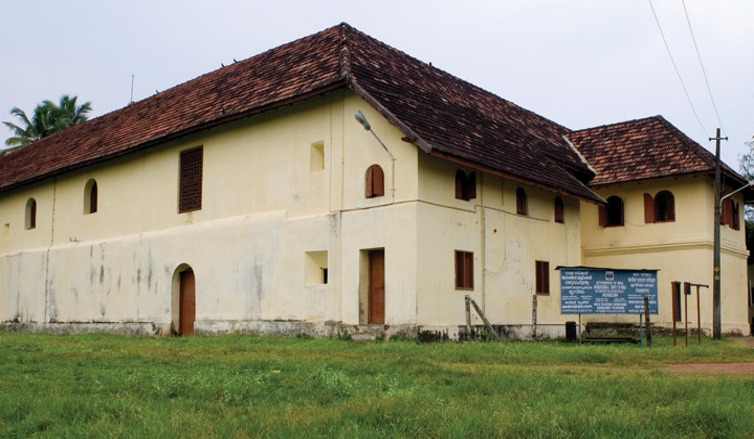
Commonly referred to as ‘Mattencherry Palace’, the ‘Dutch Palace’ stands close to the ‘Jewish Synagogue’ in Jew Town area of Mattencherry neighbourhood and makes for yet another significant historical sightseeing places in Kerala. The Dutch Palace was originally built by the Portuguese in 1557 which they later gifted to the king of Cochin not only as a compensation for their dreadful act of devastating a Hindu temple in the region but, also as a bribe for establishing trade relations with the kingdom. In 1663, the palace was taken over by the Dutch who greatly revamped and improvised its structure. That is the reason, the Dutch Palace is today, more popularly known as the ‘Dutch Palace’. With its simple white exteriors beautifully complementing the lush greenery and tall coconut trees that fringe the area, the palace is truly a sight to behold from inside; as soon as you step in the palace, you are flabbergasted to witness some breath-taking murals etched on its walls, depicting mythological scenes from Hindu epics of Ramayana, Mahabharata and other Puranic legends. And yes! These murals are counted amongst the best of their kind in India.
That is not all, the ‘Dutch Palace’ has many more elements to surprise its visitors; the intricately carved wooden ceiling of the coronation hall adorning the design of inverted lotus is sure to leave you spellbound. What further adds to the charm of the Dutch Palace is its rare and antique collection of royal paraphernalia including furniture, weaponry, palanquins, costumes and life-size portraits of Kochi kings who ruled here in the bygone era. Undoubtedly, a great place for history buffs and art enthusiasts, a visit to the ‘Dutch Palace’ would be no less than a walk in the past and is sure to leave you with some fascinating unknowns about the history of Kerala.
Fort Kochi
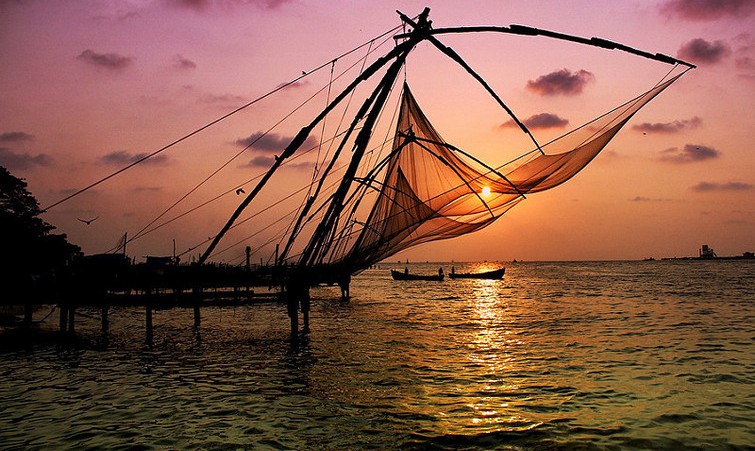
Photo: https://goo.gl/h2tiSZ
Snuggled on the shores of the tropical Malabar Coast, ‘Fort Kochi’, the historic centre of the modern day Cochin city, is by far the most important historical places to visit in Kerala. Steeped in rich antiquity and dotted with scores of crumbling buildings and monuments that reminisce of the Dutch, Portuguese and British colonial raj in the country during bygone times, it is a place worth setting out on foot, listening to those intriguing yet ‘never-heard-before’ tales of the past. As you venture on a tour of this once ‘melting hot-pot of cultures’ in South India, pause for a moment and marvel on the captivating vistas of the ‘Chinese Fishing Nets’ that precariously hang over the wooden cantilevers lined along the beach of this old town. Standing tall in their lustrous glory as a proud symbol of Kerala’s colonial legacy, these nets look even more surreal against the backdrop of the setting sun; no wonder, they are one of the most photographed attractions here and can be seen ornamenting official picture postcards and postal stamps of the state.
After a tiring day of walking around Fort Kochi, exploring its historical and cultural heritage attractions, if you feel worn out, settle down for some entertainment at the ‘Kerala Kathakali Centre’, an institute that work towards propagating different traditional art forms of Kerala; watch a magnificent Kathakali performance here and learn some interesting historical facts about this beautiful dance form during an insightful session with the brilliant Kathakali artists in person. Needless to say, a ‘must-visit’ on your Kerala Heritage tour, ‘Fort Kochi’ is always going to be etched in your memories for the lifetime.
St. Francis Church
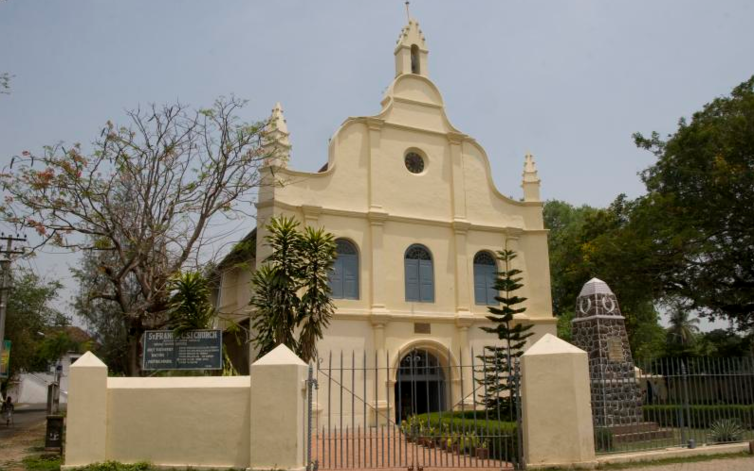
Built in 1503, ‘St. Francis Church’ holds the status of being the oldest European church in India. One of the most historically significant places in Kerala, which once stood as a quiet spectator to the struggle of different European colonial powers in the Indian subcontinent, the St. Francis Church today, attracts countless visitors from across the globe. The architecture of this ancient church, though not very artistic and modern, still manages to grab all the admiration by the visitors; the stained glass windows and gorgeous porticoes flanked with stepped pinnacle just add to its old world charm. What further draws the attention of many, is its antique collection of hand-operated cloth fans that are till date, worked upon manually with ropes on either side. Besides all that, what marks for the most important highlight of this church is its association with Vasco da Gama, the first Portuguese trader and voyager who landed on the Indian soil; the St. Francis Church is popular as the resting ground of this famous explorer who was buried here in 1524. Even though his mortal remains were sent back to Portugal 14 years later, the burial place still attracts many curious travellers from parts of the world.
One of the most significant of the numerous popular churches in India, ‘St. Francis Church’ has come a long way from being a Roman Catholic Church to a Reformist Church maintained by the Dutch to finally transforming into an Anglican Church. Today, this church is owned by CSI (Church of South India) and has become an integral part of Kochi’s identity. Tourists are welcome to visit this church any day of the week except Sundays and public holidays when it is busy hosting the regular prayer services for the locals.
Thalassery Fort
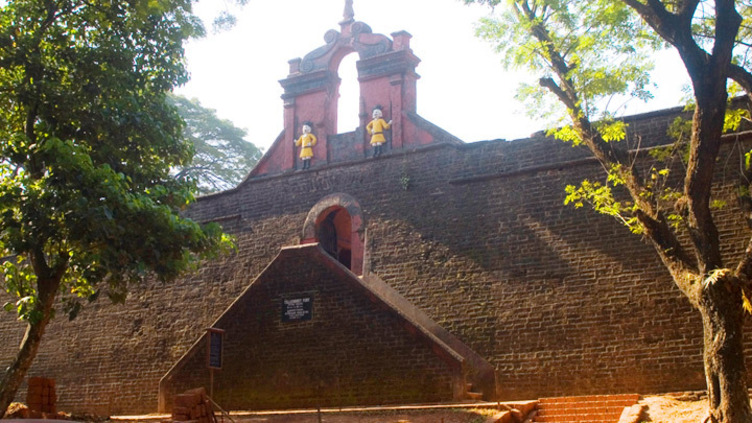
Photo: https://goo.gl/5czqUJ
Built in early 18th century by the British East India Company in small town of Thalassery in Kannur district of Kerala, the ‘Thalassery Fort’ stands as an imposing structure with massive walls, strong bastions and grandiose doors embellished with elaborate carvings. A testament to impressive engineering skills of the then British engineers and designers, the fort encloses a number of secretive tunnels and underground chambers that once served as hiding burrows for the defeated British military personnel. Sitting on a rocky cliff right on the edge of the beautiful Malabar Coast and flanked by lush gardens, it provides for an ideal ambience to get some taste of regional history and heritage. You can either go for leisurely walks along the fort’s expansive ramparts and revel yourselves in some panoramic views of the turquoise sea or just relax and spend a laid-back time in its well-manicured lawns. And needless to say, before all the recreational stuff, taking a tour of the fort is an absolute must; as you go around the fortified walls, you are sure to be intrigued with many interesting stories associated with it; be it the imprisonment of the army of Mysore ruler, Hyder Ali or strategizing the capture of Pazhassi Raja, a great Indian freedom fighter popularly known as the ‘Lion of Kerala’, the fort has stood as a silent witness to many conspiracies planned by the British officials in the past to had their controls secured over the Malabar region.
This historical fort today, is maintained by the Archaeological Survey of India and indeed, they have done a great job, making it an absolute delight for visitors who have a penchant for history and architecture. So, if you are also amongst those avid history buffs, a visit here definitely has to be marked on your travel itineraries.
Bekal Fort
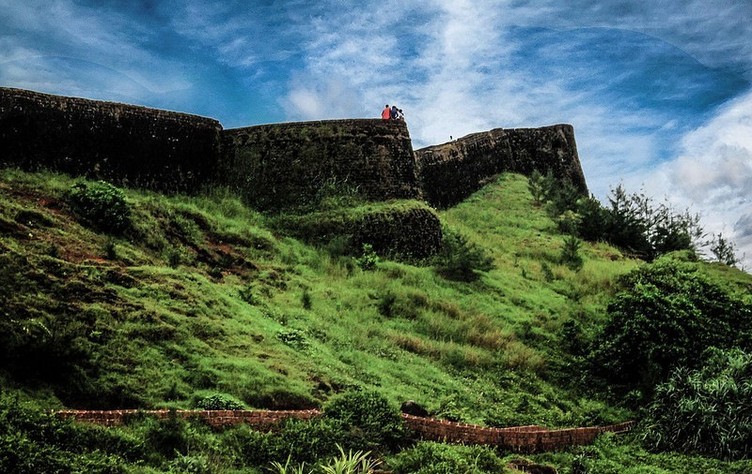
Photo: https://goo.gl/RrYK5Z
Famed to be the largest and one of the best preserved forts in Kerala, ‘Bekal Fort’ spreads over 40 acres of land near Pallikkara village of Kasargod district and runs into the bay waters of the sea towards its south. A fort with great historical and archaeological significance built in mid-17th century by the Shivappa Nayaks of Badnore, it attracts hundreds of historians and archaeologists alike who come here to study and unfold its hidden mysteries. The Bekal Fort which once served as a nucleus in establishing the control of the Badnore Nayaka rulers in the region was subsequently captured by the Mysore ruler, Hyder Ali in 1763 and thereafter, continued as one of the important military stations for the Tipu Sultan led army working on the mission to expand their hold over Malabar.
Many archaeological excavations done in and around the ‘Bekal Fort’ have revealed coins and other interesting artefacts indicating the strong foothold of Mysore sultans in the region. In 1799, with the death of Tipu Sultan, the Bekal Fort fell into the hands of the British East India Company and remained under their administration until India gained independence. As the fort exchanged hands with many ruling powers, considerable changes and improvements were brought in its structure by each dynasty. The most significant of all the additions done in the fort is by far, the tall observation tower built during the times of Tipu Sultan; a rare feature of the then forts, the tower was strategically erected at such a position that it could easily aid in discovering even the smallest of the movements of its enemies. And yes, the breath-taking views of the beautiful ocean and scenery around from this tower still captivate many. Of late, the Bekal Fort, flanked by lush greenery and majestic sea, has become a favourite hotspot for shooting films, TV serials and music videos; off-course the credit goes to the ace filmmaker Mani Rathnam who started the trend by shooting the beautiful song ‘Tu hi re’ from his famous movie ‘Bombay’ at this exotic locale.
Padmanabhapuram Palace
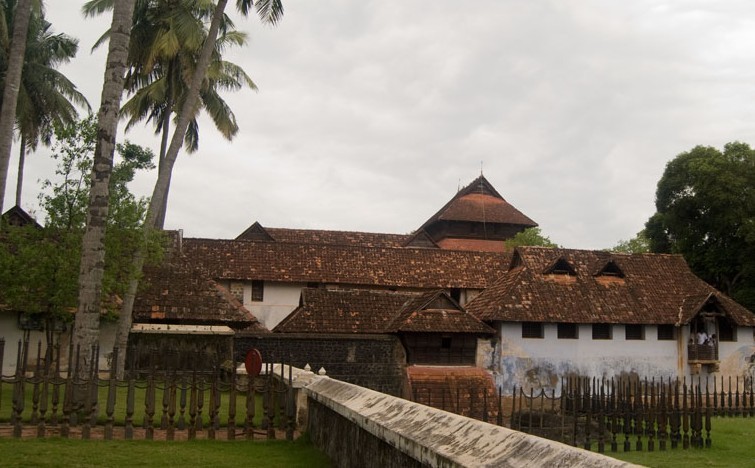
Photo: https://goo.gl/TKXZaJ
Located on the foot of Veli Hills in Kanyakumari district of Tamil Nadu, a short distance from the city of Thiruvananthapuram in Kerala, the ‘Padmanabhapuram Palace‘ dating back to 16th century AD is a true architectural marvel exuding an unmatched royal splendour of the kings of the erstwhile princely state of Travancore in India. One of the must visit places in Kerala (though the palace lies in Tamil Nadu, it still comes under the administration of government of Kerala), the palace is sure to leave you astounded with its gorgeous interiors decorated with intricate rosewood & teakwood carvings, exquisite mural paintings and delicately sculpted figurines on pillars and columns throughout its halls and rooms.
Besides the palace’s rich interiors, its exceptional building technique and indigenous methods of craftsmanship in wood is something that needs a special mention; the Padmanabhapuram Palace is primarily constructed of timber with minimal use of stone and laterite. The carpenters have done an excellent job in working out the most complex of the angles with such a high degree of accuracy that there is seldom any use of metal nails to fix different beams together. Also, you would be amazed to know that the floor of this magnificent structure has been built using organic materials like burnt charcoal, sea-shell lime, egg whites, river sand, curd and buttermilk. That is not all! A special attention has been given to lightening and shadowing work, that too in accordance with rules of vastushastra. All in all, a gem of cultural and architectural legacies of Kerala, the ‘Padmanabhapuram Palace’ is truly a heaven for those with a penchant for ancient art and architecture of India. Needless to say, if you are in Kerala for a holiday, do visit this ancient site and take along with you, some beautiful memories of a memorable heritage tour in this cultural hub of India.
Krishnapuram Palace
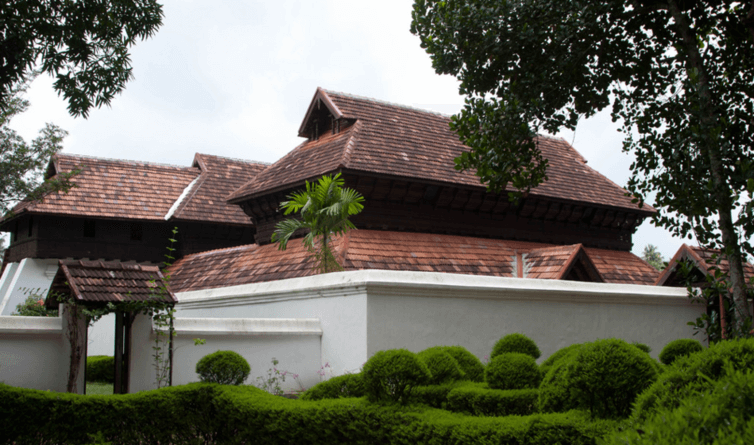
Photo: https://goo.gl/vRhXHk
Located near Alappuzha, ‘Krishnapuram Palace’ is yet another of the famous heritage tourism places in Kerala. Built in 18th century by the then maharaja of the kingdom of Travancore in South India, the palace reflects a typical Kerala style of architecture with pitched roofs, dormer windows and thin corridors. Enlisted as a protected monument under the state archaeology department, the Krishnapuram Palace has today been converted into an archaeological museum and exhibits a rare collection of fascinating mural paintings, the most noteworthy of which is the 49 square metres long ‘Gajendra Moksham’. Depicting an elephant (Gajendra) worshipping Lord Vishnu in full devotion, the painting is the largest of its kind so far discovered in Kerala. Another of the major highlights of the palace is a Buddha mandapam enshrining a Buddha statue, one of the four ancient Buddha relics found in the Alappuzha district.
Other interesting artefacts to be seen inside the Krishnapuram Palace complex are some fine collections of early coins of the Travancore kingdom, bronze sculptures and stone inscriptions; a double edged sword called the ‘Kayamkulam Vaal’ is yet another of the prized possession of this palace cum museum. Needless to say, a heaven for historians, a visit to this ancient palace which is actually a miniature replica of the Padmanabhapuram Palace is sure to leave you awed with its antiques and off-course, the bewitching architecture that has further been beautified with addition of ornate terraced gardens dotted with fountains, ponds and flower beds. One can sit here for hours soaking himself in the serene and tranquil aura of the place.
Anchuthengu Fort
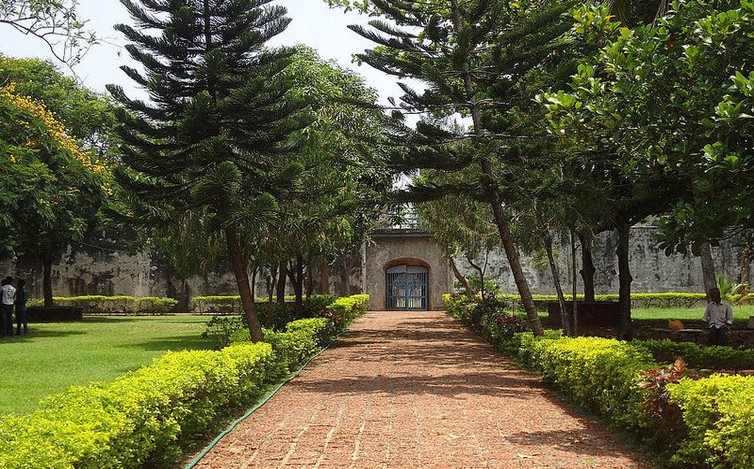
Photo: https://goo.gl/iaahp1
Well known for being the British East India Company’s first permanent trade post on the Malabar Coast, the ‘Anchuthengu Fort’ holds a great significance in Kerala’s colonial history. Built in 1699, the Anjengo Fort primarily started off as a site to promote company’s trade relations with various countries, it gradually transformed into a centre to store the military equipment and ammunitions. Many important events associated with history of Kerala can be traced back to Anchuthengu Fort; the ‘Attingal Rebellion of 1721’ wherein the local people, agitated with injustice of Britons sieged the fort and killed a contingent of 140 British traders, is still remembered as the first and one of the very crucial collective moves against the British rule in Kerala. Though the rebellion was defeated by the British force, it triggered off a series of subsequent revolts to chase Britishers off the Indian subcontinent. Besides, the Anchuthengu Fort also played a significant role during the Anglo-Mysore war in 18th century wherein it served as a storehouse for the armoury and other equipment for British army. Today, the fort enjoys the status of a national heritage monument and makes for one of the famous historical attractions in Kerala.
Apart from being a site of high historical relevance, the fort’s aesthetical beauty sandwiched between the sea and backwaters makes it a favourite getaway for couples, families and nature lovers too who throng here to spend a day on the beach nestled on the foot of the Anjengo Fort. Needless to say, a soul soothing scenery of criss-crossed network of coconut trees fringed across the backwaters absolutely provide for a captivating spectacle that fills your hearts with peace and tranquillity.
Palakkad Fort
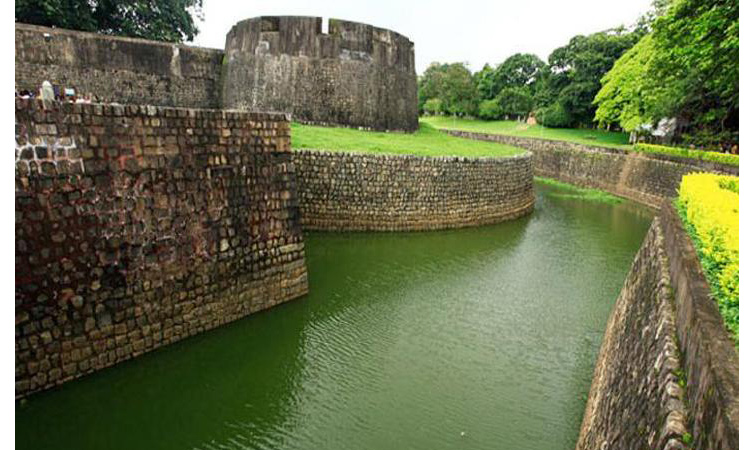
Also famously called as the ‘Tipu’s Fort’, ‘Palakkad Fort’ built in 1766 AD by the Mysore Sultan, Haider Ali (father of Tipu Sultan), is definitely a gateway into Kerala’s intriguing past. Nestled amidst picturesque Sahayadri ranges of the Western Ghats, the fort with its thick granite walls and strong bastions, reminds every visitor of many of its tales of bloodshed, bravery and valour; it is from this fort that the Tiger of Mysore (Tipu Sultan), fought many battles against the colonial rule of British. One of the well preserved forts by the Archaeological Survey of India, the Palakkad Fort is not only a great place to revel in some fascinating history but, also a site to marvel on the pristine beauty of nature. The landscaped lawns and a children’s park adjacent to the fort today, make it a favourite hotspot for family picnics and day outings. ‘Kotta Maidanam’ or the ‘Fort Grounds’ which once served as stable for horses and elephants of Tipu Sultan’s army, are now used as a ground for organizing local football and cricket matches.
A temple dedicated to Lord Hanuman is another interesting attraction inside the fort; known as the ‘Anjaneya Temple’, this temple enshrines an old carving of Lord Hanuman, believed to have been engraved by the warriors of Tipu Sultan’s army who had unshakeable faith in the prowess of the Lord. Even as of date, hundreds of locals visit this temple to pay their reverence to the almighty. The old open air auditorium called ‘Rappadi‘, inside the fort is yet another noteworthy site that has recently been renovated by the archaeological department and serves as a venue for local musical and cultural events; if you are lucky enough, you might even get an opportunity to watch a live performance during your visit here.
Tripunithura Hill Palace Museum
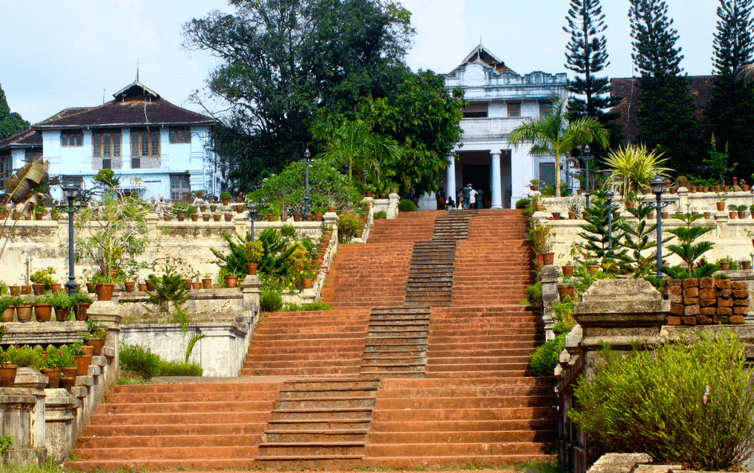
Photo: https://goo.gl/PUYLBE
For all the history buffs, nothing can match the grandeur of the ‘Tripunithura Hill Palace Museum’ located in the capital city of Kochi in Kerala. A majestic palace complex built by the erstwhile Maharaja of Cochin In 1865, it has now been converted into an archaeological and heritage museum by the Kerala State Archaeology Department and invites a number of historians, researchers and scholars studying Indian history from all across the world. The largest museum of its kind in Kerala, it showcases an excellent collection of artefacts primarily belonging to the Cochin royal family; some of the most beautiful oil paintings and murals of ancient times can be seen adorning the walls of this museum.
Other noteworthy exhibits include royal thrones & chairs, wood & ivory items, stone sculptures, a collection of valuable old coins, ancient manuscripts, inscriptions & palm leaf records, chariots & horse carts and pottery gifted by Chinese and Japanese traders to the royal kings of Kochi. One brilliant exhibit that instantly captures your attention at the museum is the collection of gold ornaments studded with precious and semi-precious stones; the gold crown belonging to the erstwhile maharaja is truly the centre of attraction. Needless to say, a heaven for history lovers, this palace is a must visit whenever you are in Kerala.
Gundert Bungalow
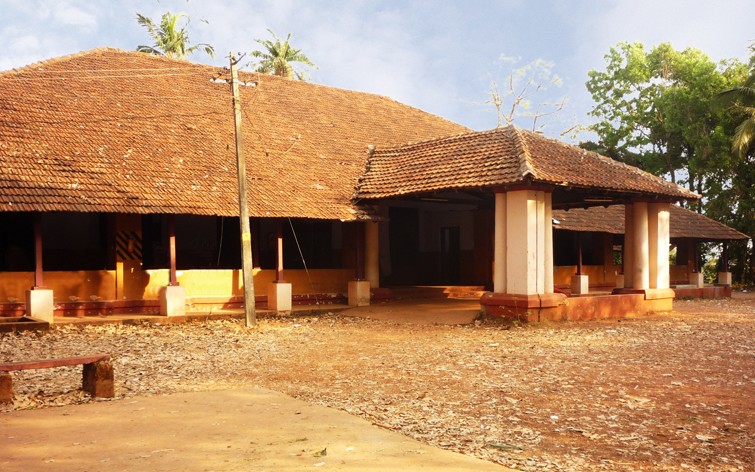
Photo: https://goo.gl/XvycnR
‘Gundert Bungalow’, the residence of Dr. Hermann Gundert, a renowned German scholar and missionary of his times who lived here between 1839 and 1859, is undoubtedly, one of the most significant heritage sites in Kerala. Located amidst tall palms in small town of Thalassery in Kannur district of Kerala, the 200 years old bungalow with its typical colonial mansion style architecture, stands tall as a witness to many great works of literature and lexicography by the legendary scholar who spent most of his time researching the classical Indian literature and learning new languages. No less than a living piece of history, you would be amazed to know that the first daily newspaper in Malayalam, ‘Rajyasamacharam’, the first Malayalam magazine, ‘Paschimodayam’ and the first Malayalam-English dictionary took birth in this heritage building only. Gundert’s other works comprising of a Malayalam grammar compilation, a thesis on neo classical history of Kerala after the arrival of Vasco da Gama and contributions towards Bible translation in Malayalam, are counted amongst the most precious and are kept well-preserved in the bungalow for public viewing. Till date, Dr. Gundert is held in high regards by linguistic experts in Kerala and is honoured with a grand statue in his remembrance. Needless to say, if you are a literary lover or a history enthusiast, this place is a must see during your holidays in Kerala.
Edakkal Caves
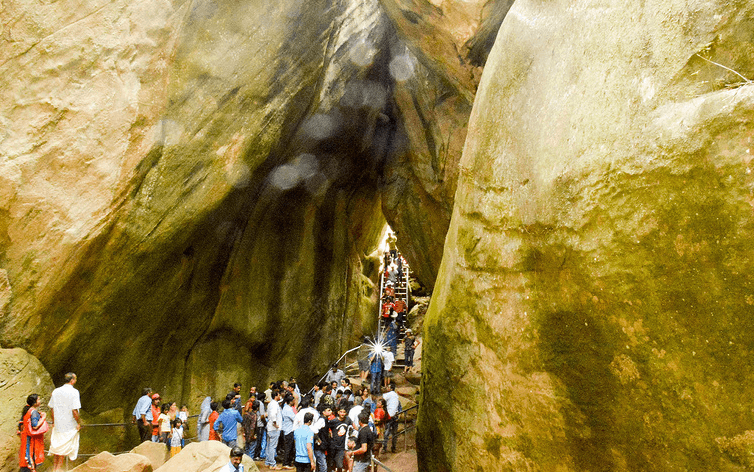
Photo: https://goo.gl/hPHr8Q
Dating back to the Stone Age, the ‘Edakkal Caves’ located on the Ambukuthi Hills in Wayanad district prove to be one of the most popular heritage sightseeing attractions in Kerala, especially for those who look forward to exploring something beyond forts and palaces. Decorated with pictorial depictions that trace back to over 8000 years, these caves are the only ones of their kind in South India and indicate towards the existence of pre-historic settlement in the region during Neolithic era. The caves were brought to the world’s notice by the British police official, Till Fred Fawcett in 1890 and since then, they have become an integral part of heritage tourism in Kerala, luring innumerable casual & curious tourists, archaeologists, history enthusiasts and anthropologists from across the globe.
To reach the Edakkal Caves, you need to trek 4000 ft. uphill, winding your way through lush flora and scenic coffee plantations. Once you reach the top, get ready to enter a world of enigma and history where ancient stone inscriptions and pictorial depictions of human figures, mythical animals, weaponry and tools used by the early men, take you in complete awe of admiration. These beautiful carvings, which have bravely withstood the challenges of weather and climatic conditions over past hundreds of centuries, take you by great surprise making you really ponder how a highly civilized society could have existed such thousands of years back; leave your thoughts to rest and just soak your souls in splendid beauty of the place, bringing out those hidden cameras from your bags to capture the fabulous petroglyphs in your lenses and memories forever.
Rock-Cut Temples
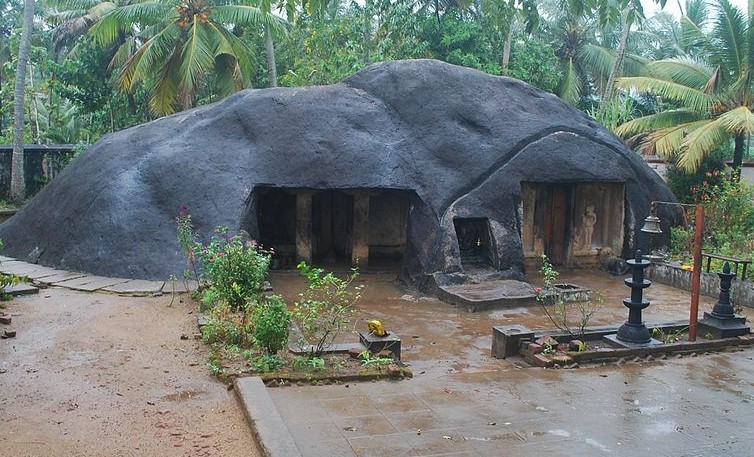
Photo: https://goo.gl/16mvEC
One of the earliest ancient heritages of Kerala is its exquisite rock cut temples that even as of date, stand as a testament to this beautiful state’s exceptional cultural and architectural legacy. The most famous of these cave temples is the ‘Kottukal Cave Temple’ located in Kollam district of Kerala. Built between 6th and 8th century, the temple is one of its kind and gives the illusion of a sleeping elephant when seen from a distance. A living example of the traditional architectural excellence prevalent in bygone times, the temple amalgamates two chambers of different sizes carved out from a single gigantic rock and enshrines the deities of Lord Ganapathy, Hanuman, Nandi Bull and Lord Shiva in the form of Shivlinga.
Yet another most significant of all the rock cut temples in this cultural state of India is the ‘Thrikkakkudi Rock-Cut Temple’ whose history can be traced back to the times of Pallava reign in the region somewhere around 8th century AD. Situated on the banks of Manimala Rivier in the Kaviyoor village of Kerala, the temple stands as an important specimen to the ancient rock-cut temple art existing in the state and is preserved as a heritage monument by the state archaeological department. Dedicated to Lord Shiva, the temple is carved from a huge rock and preserves some antique stone sculptures of great historical significance. The unique feature of this temple is its 3 ft. high Shivlinga and sculptures of Lord Ganapati and Maharshi, all carved out from a single rock along with the cave chamber.
A rock cut cave temple tour in Kerala remains incomplete without visiting the ‘Vizhinjam Cave Temple’ located in a tiny village, a short distance from the city of Thiruvananthapuram. A very small yet an important ancient shrine that is carved from a single granite rock, it enshrines a sculpture of Vinandhara Dakshinamurthy. The real charm of this temple is undoubtedly, the half-complete relics of Lord Shiva with his consort, Goddess Parvati adorned on its outer walls; these incomplete engravings for sure arouse that sense of enigma making you wonder about the possible reasons that forced the then artisans to leave the carvings unfinished. Yet another of a protected monument under the control of Archaeological Survey of India, the temple is a must visit if you are into ancient art & historical studies or an offbeat traveller who is always on a lookout to discover something new and interesting on every twist and turn of his travel odyssey.
Karumadikuttan
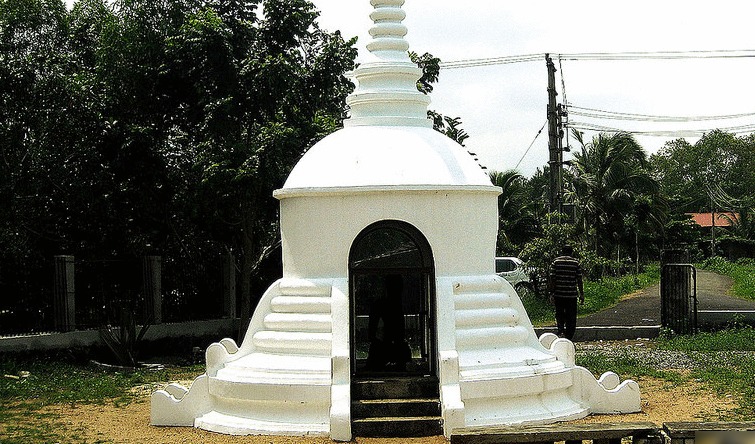
Photo: https://goo.gl/rvAp4z
Protected by the state archaeological department, ‘Karumadikuttan’ is one of the popular heritage and Buddhist pilgrimage sites near Alappuzha in Kerala, housing a pre-historic statue of Lord Buddha dating somewhere between 9th and 13th centuries AD. The 3ft. tall statue sculpted in black granite, with its left side missing, is believed to have been abandoned for centuries in the nearby water stream of ‘Karumady thodu’ and was found by a British engineer in 1930s who later built a shrine to protect this ancient relic. The shrine today, sits along the backwaters of the ‘Punnamada Lake’ amidst extreme tranquillity and provides for a huge respite to people looking out for mental peace and calm. Needless to say, the site also serves as a great reminder of the once flourishing Buddhist culture in the region, luring countless Buddhist pilgrims and researchers & scholars studying ancient cultures of India.
What instantly grabs your attention when you see the statue for the first time is its missing left side that leaves you with many questions unanswered regarding its broken state. Well! many theories relate to it but, none has been confirmed by the historians owing to lack of evidences. The first and rather much believable theory that explains this condition of the statue is the violent act of Mughals who destroyed it in order to cease the spread of Buddhism in Kerala. Yet another theory which is precisely more of a folklore describes it to be the act of an enraged elephant who, in his fit of anger destroyed the statue’s left side. Whatever be the theory, the statue in its meditative stance continues to bless its visitors giving them the message of peace, harmony and one-ness among all humans.
While we have tried to provide our readers with the list of best heritage sites to visit in Kerala, there might be many more which we still need to explore. If you feel, there is a site or a monument that is missing and worth to be included in this blog, please let us know by posting a comment in the section below.
Published: 15 Dec, 2016
As a tour manager at TourMyIndia.com, Anil Rana has helped his clients in exploring the Indian wildlife and cultural heritage. His love for travel has imparted him immense knowledge of Indian wildlife, cultural heritage, leisure destinations. To help travellers all across the world, he loves to pen down his experiences and wisdom about cultural, wildlife and leisure travel in India.


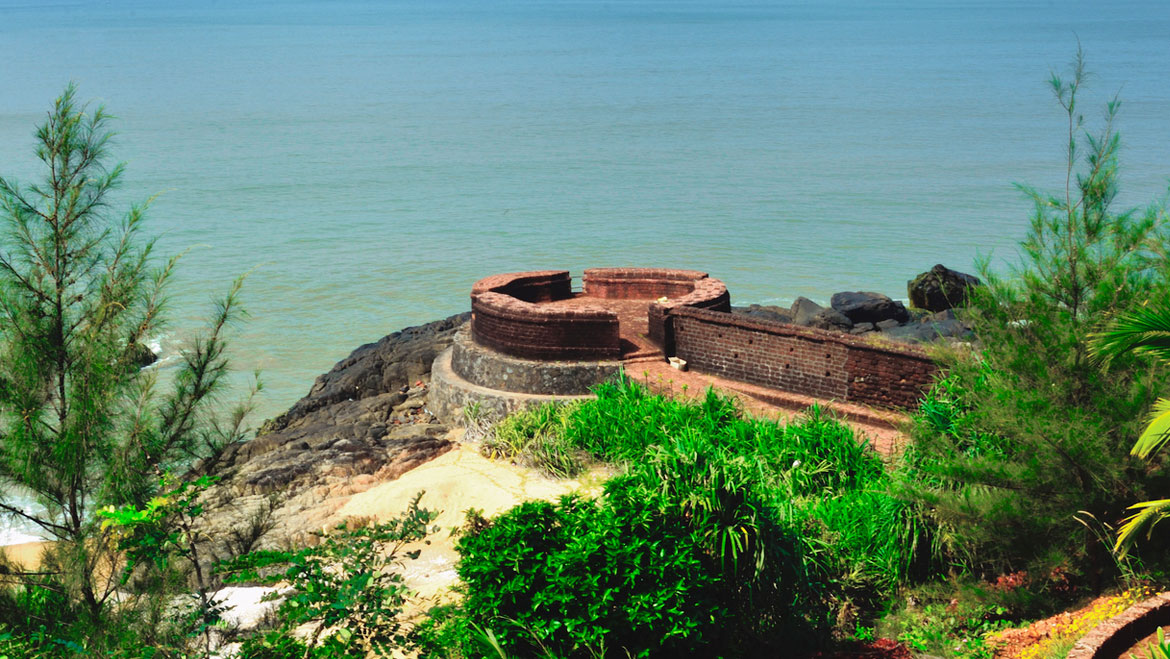
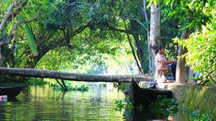 9 Nights / 10 Days
9 Nights / 10 Days 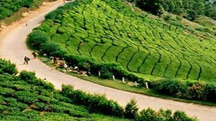 9 Nights / 10 Days
9 Nights / 10 Days 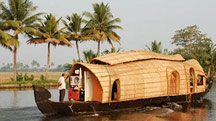 10 Nights / 11 Days
10 Nights / 11 Days  6 Nights / 7 Days
6 Nights / 7 Days 














 3 Nights / 4 Days
3 Nights / 4 Days 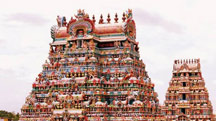 5 Nights / 6 Days
5 Nights / 6 Days 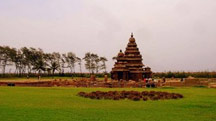 15 Nights / 16 Days
15 Nights / 16 Days 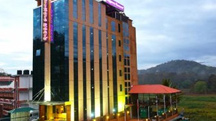 6 Nights / 7 Days
6 Nights / 7 Days 








